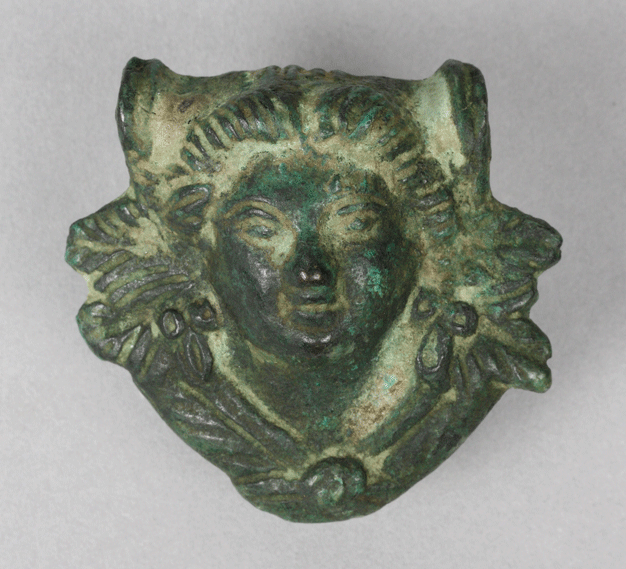

64.14.6, bronze ornamental element from unknown object
Roman Republic/Empire (100 B.C.–A.D. 200)
Gift of Hollis Hopkins
Photograph by B. Bernard
Whatever this ornamental element was intended to display (a goddess,
most likely), it also betrays Roman concepts of feminine beauty.
For Roman women of any consequence, an elaborate hairdo was as
critical then as it is for many women today.
Bronze is a mix of copper and tin, which came from opposite ends of the Roman Empire. The copper came from the eastern Mediterranean, while the tin probably came from is now England. The gray-green patina is from the slow oxidation of the surface, and derives primarily from the copper.
To return to the thumbnail, please click here.
All content copyright © Maxwell Museum of Anthropology, University of New Mexico. A high-resolution verson of this photograph may be ordered from the Maxwell Museum's photo archives. Please make note of the catalogue number. For more information please visit the photo archives web page
Page last revised on February 10, 2010. Please report problems to toh@unm.edu